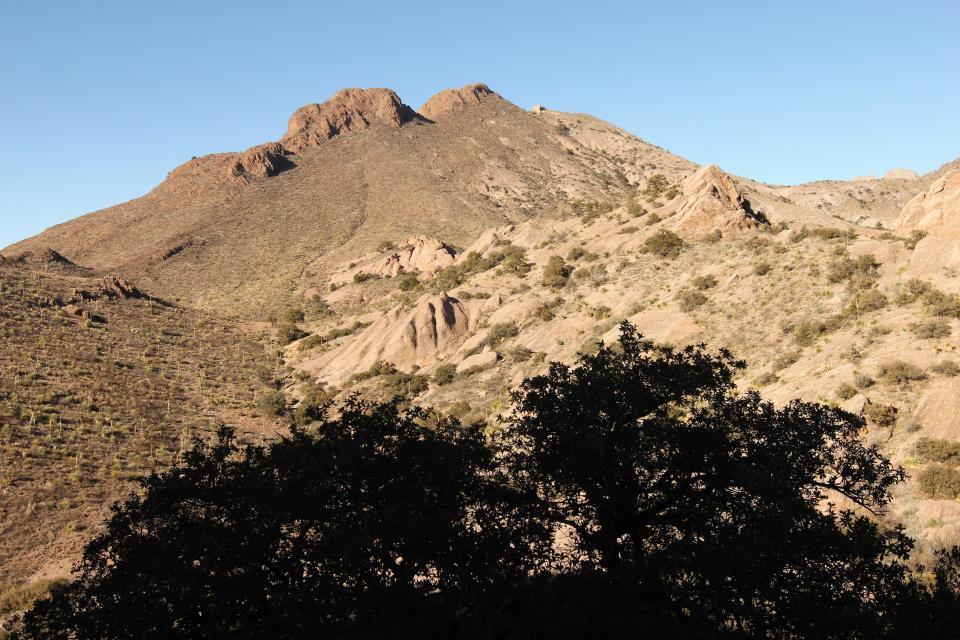How should Organ Mountains-Desert Peaks National Monument be managed? BLM wants feedback
Organ Mountains-Desert Peaks National Monument was first established in 2014 by former-President Barack Obama.
It covers 496,000 acres in southern New Mexico and was intended to protect historic and geologic resources in four areas: the Organ Mountains, Desert Peaks, Potrillo Mountains and Do?a Ana Mountains.
The U.S. Bureau of Land Management manages the lands of the monument and sought public feedback as the agency prepares a resource management plan for the next 20 years.
More: Occidental Petroleum funds new fishing dock at Brantley Lake State Park
Here’s what we know about the plan, and how you can comment on it.
What areas are included in the federal plan to manage the monument?
The monument includes the Organ Mountains, a mountain range that climbs from the Chihuahuan Desert to an elevation up to 9,000 feet near the east side of Las Cruces. The area is known for photography, hiking, horseback and bike riding along with camping.
The Desert Peaks include the Robledo Mountains, Sierra de las Uvas and Do?a Ana Mountains. These areas are known for the high desert peaks rising from flat plains. They boast hiking, biking and equestrian trails and rock climbing.
More: Carlsbad Irrigation District looks for feds to pay $35M to replace Sumner Dam's floodgates
The most remote section of the monument is the Potrillo Mountains southwest of Las Cruces, which are made of volcanic landscapes like cinder cones, lava flow and craters.
How many people visit Organ Mountains-Desert Peaks National Monument?
In fiscal year 2022, the BLM reported 662,445 visitors to the monument, according to the agency’s latest data.
This marked a decrease of about 50,000 visitors from FY 2021, which the BLM credited to the easing of COVID-19 restrictions.
More: 14,000 miles and counting: One man's cross-country bike ride through America's national parks
What is the Bureau of Land Management proposing at Organ Mountains-Desert Peaks?
The BLM published two documents to guide management of the monument for the next two decades. An environmental impact statement (EIS) covered the monument’s impacts on wildlife and public land while the resource management plan (RMP) sought to direct the agency’s use of such resources.
The BLM said it hoped to balance conserving environmental resources with recreational opportunities for visitors and sought input from residents before finalizing drafts of the two documents.
The monument’s management is presently directed under the BLM’s Mimbres Resource Management Plan enacted in 1993, and the new plan would be catered specifically to monument alone as required by the 2014 proclamation that established it.
More: Oil and gas land auction cut by more than 3,000 acres in New Mexico amid concerns

What’s in the plan to manage the national monument?
The resource management plan covers four alternatives for consideration – continuing to manage the lands under the Mimbres RMP, focusing on conservation, focusing on recreational uses and the BLM’s “preferred alternative” balancing the two.
The plan discussed several issues it considered in choosing an alternative including disturbance of wildlife, wildfire suppression, availability of recreation, impacts to agriculture, cave systems and visitor experience.
The preferred alternative and the plan prioritizing conservation would result in the least pollution that could impact nearby communities and environments, read the RMP, but those would also impose the strongest restrictions on human uses.
More: Top 5 National Park sites to visit in New Mexico this spring
How can you comment on the BLM’s 20-year plan for Organ Mountains-Desert Peaks?
Any member of the public can submit comments to the BLM’s Las Cruces District Office through July 5.
Comments can be submitted on the BLM’s website by clicking “Participate Now” on the project page. The documents can also be reviewed online or at the BLM office in Las Cruces. Comments can also be submitted via email to [email protected].
Participants can also deliver comments in person to the BLM’s Las Cruces District Office, Monday through Friday from 7:30 a.m. to 4:30 p.m. or by mail to the office to ATTN: OMDPNM RMP Project Manager, BLM Las Cruces District, 1800 Marquess Street, Las Cruces, NM 88005.
Comments should include suggested changes, sources or methodologies for the plan.
Will there be a public meeting to discuss the plan for the monument?
The BLM planned to host two in-person public meetings and two virtual public meetings. Times, dates and venues will be announced later.
Adrian Hedden can be reached at 575-628-5516, [email protected] or @AdrianHedden on the social media platform X.
This article originally appeared on Carlsbad Current-Argus: Organ Mountains-Desert Peaks National Monument: BLM wants feedback